|  |
|---|
|  |
|---|

| ||||||||||||||||||||||||||||||||||||||||||
|
First Charter of Human Rights King Cyrus - A Just Ruler King Cyrus is called by God to serve Him King Cyrus allows Jews to return to Israel Persian Kings in the Bible Chronology of Persian History Rulers & Dynasties of Persia King Darius orders Daniel to the Den of Lions What the Bible Says About Persia Iran in the Bible Persians in the Bible Persia and the Bible 
Translate this page 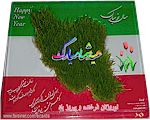 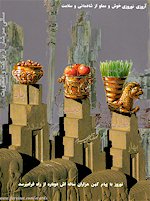 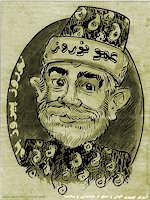 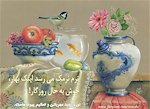 
  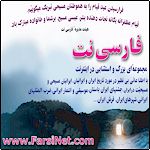   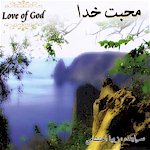  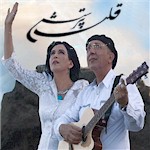 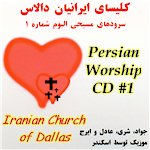  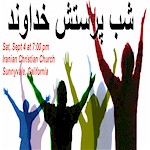  |
Cyrus Charter of Human Rights Cylinder
|
|||||||||||||||||||||||||||||||||||||||||
|
The charter of Cyrus the Great, a baked-clay Aryan language (Old Persian) cuneiform cylinder, was discovered in 1878 in excavation of the site of Babylon. In it, Cyrus the Great described his human treatment of the inhabitants of Babylonia after its conquest by the Iranians.
The document has been hailed as the first charter of human rights, and in 1971 the United Nations was published translation of it in all the official U.N. languages. "May Ahura Mazda protect this land, this nation, from rancor, from foes, from falsehood, and from drought". Selected from the book "The Eternal Land". I am Cyrus.
From The First Charter of the Rights of Nations Cyrus, The Great, 539 B.C.
| |||||||||||||||||||||||||
Cyrus The Great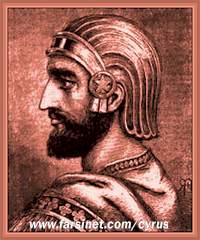 Cyrus (580-529 BC) was the first Achaemenid Emperor. He founded Persia by uniting the two original Iranian Tribes- the Medes and the Persians. Although he was known to be a great conqueror, who at one point controlled one of the greatest Empires ever seen, he is best remembered for his unprecedented tolerance and magnanimous attitude towards those he defeated.
Cyrus (580-529 BC) was the first Achaemenid Emperor. He founded Persia by uniting the two original Iranian Tribes- the Medes and the Persians. Although he was known to be a great conqueror, who at one point controlled one of the greatest Empires ever seen, he is best remembered for his unprecedented tolerance and magnanimous attitude towards those he defeated.
Upon his victory over the Medes, he founded a government for his new kingdom, incorporating both Median and Persian nobles as civilian officials. The conquest of Asia Minor completed, he led his armies to the eastern frontiers. Hyrcania and Parthia were already part of the Median Kingdom. Further east, he conquered Drangiana, Arachosia, Margiana and Bactria. After crossing the Oxus, he reached the Jaxartes, where he built fortified towns with the object of defending the farthest frontier of his kingdom against nomadic tribes of Central Asia. The victories to the east led him again to the west and sounded the hour for attack on Babylon and Egypt. When he conquered Babylon, he did so to cheers from the Jewish Community, who welcomed him as a liberator- he allowed the Jews to return to the promised Land. He showed great forbearance and respect towards the religious beliefs and cultural traditions of other races. These qualities earned him the respect and homage of all the people over whom he ruled. | |||||||||||||||||||||||||
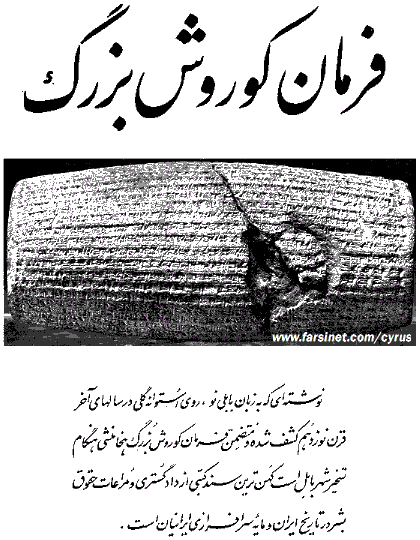
Charter of the Rights of Nations Inscribed on a clay cylinder in cuneiform discovered in 1879 now in The British Museum, London. More information on Cyrus Cylinder
|
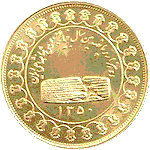
| ||||||||||||||||||||||||
|---|---|---|---|---|---|---|---|---|---|---|---|---|---|---|---|---|---|---|---|---|---|---|---|---|---|
|
| |||||||||||||||||||||||||
|
After victory over Babylonia, Cyrus The Great presented himself not as a conqueror, but a liberator and the legitimate successor to the crown. He took the title of "King of Babylon and King of the Land". Cyrus had no thought of forcing conquered people into a single mould, and had the wisdom to leave unchanged the institution of each kingdom he attached to the Persian Crown. In 537 BC he allowed more than 40,000 Jews to leave Babylon and return to Palestine.
He also declared the first Charter of Human Rights known to mankind, which is written on a clay cylinder:
When I, well-disposed, entered Babylon, I established the seat of government in the royal palace amidst jubilation and rejoicing. Marduk, the great God, caused the big-hearted inhabitants of Babylon to...me. I sought daily to worship him. My numerous troops moved about undisturbed in the midst of Babylon.
I did not allow any to terrorize the land of Sumer and Akkad. I kept in view the needs of Babylon and all its sanctuaries to promote their well-being. The citizens of Babylon... I lifted their unbecoming yoke. Their dilapidated dwellings I restored. I put an end to their misfortunes.
At my deeds Marduk, the great Lord, rejoiced, and to me, Cyrus, the king who worshipped, and to Cambyses, my son, the offspring of my loins, and to all my troops, he graciously gave his blessing, and in good spirit is before him we/glorified/exceedingly his high divinity.
All the kings who sat in the throne rooms, throughout the four quarters, from the Upper to the Lower Sea, those who dwelt in ... all the kings of the West Country who dwelt in tents, brought me their heavy tribute and kissed my feet in Babylon. From ... to the cities of Ashur and Susa, Agade, Eshnuna, the cities of Zamban, Meurnu, Der, as far as the region of the land of Gutium, the holy cities beyond the Tigris whose sanctuaries had been in ruins over a long period, the Gods whose abode is in the midst of them. I returned to the places and housed them in lasting abodes. I gathered together all their inhabitants and restored to them their dwellings. The Gods of Sumer and Akkad whom Nabonidus had, to the anger of the Lord of the Gods, brought into Babylon, I at the bidding of Marduk, the great Lord made to dwell in peace in their habitations, delightful abodes.
May all the gods whom I have placed within their sanctuaries address a daily prayer in my favour before Bel and Nabu, that my days may long, and may they say to Marduk my Lord, May Cyrus the King who reveres thee, and Cambyses his son ..."
The ceremony will be held to highlight the historical magnificence of Persepolis and examine the numerous existing legends about Cyrus.
The event will be attended by researchers and historians who will deliver speeches about the history of Fars Province and the Achaemenid dynasty.
Cyrus the Great (529-580 BC) united the two original Iranian Tribes- the Medes and the Persians.
Cyrus is best remembered for his great tolerance and noble attitude towards the conquered nations. He is also famous for the declaration of the first Charter of Human Rights.
He is buried in Pasargade, 70 kilometers north of Persepolis in Fars.
Cyrus the Great proclaimed more than 2500 years ago: "Today, I announce that everyone is free to choose a religion. People are free to live in all regions and take up a job provided that they never violate other's rights." Cyrus the Great declared himself not a conqueror, but a liberator and the rightful successor to the crown.
The ancient world held universal admiration for the beliefs and practices of the Persians as enshrined in the Cyrus Charter of Human Rights. Even the Greeks, the traditional adversaries of the Persians, called Cyrus "The Lawgiver". History has recorded that Cyrus did accomplish the task for which he was foreordained.
Alexander the Great plundered Persia. He destroyed and burned Persepolis, the magnificent palace complex of the Achaemenid kings in the province of Pars. Yet, Alexander paid tribute to Cyrus the Great at his tomb. This shows how much Cyrus the Great was respected, even in the eyes of his fierce enemies.
Cyrus the Great has been given many names: Cyrus the enlightened liberator, Cyrus the benevolent, Cyrus the Law-giver, Cyrus the righteous, Cyrus the heroic conqueror, Cyrus the tolerant King, and many more. No other man so far back in ancient history had been showered with such accolades by kings and emperors who knew of him only by reputation.
Cyrus the Great is the founding father of Persia and the mighty Persian Empire . perhaps the most exemplary, magnificent and just king the world has ever seen.
An illustration of the benevolent beliefs and practices launched by this unsurpassed historical figure goes back to the landmark action of King Cyrus the Great of Persia. In 539 B.C., having conquered Babylon, the benevolent King Cyrus freed the Jews from captivity and empowered them to return to the Promised Land and build their temple.
For his acts of kindness, Cyrus the Great is immortalized in the Bible in several passages and called "the anointed of the Lord". The Jews, throughout recorded history, looked to Cyrus' people, the Iranians, as their friends and protectors against oppressors such as the Seleucids and the Romans.
In the book of Isaiah, Cyrus, the King of Persia, a non-Jew was called the "mash'aka" God, according to Isaiah when he wrote: .Thus said the Lord to his 'mash'aka (anointed), to Cyrus. (Isaiah 45:1). Jeremiah also told that Cyrus was commissioned by God to go to Jerusalem and build the Second Temple.
"Who carry the vessels of the Lord" (v. 11b). Ezra tells the story of the departure of the exiles from Babylonia: "King Cyrus himself brought out the vessels of the house of the LORD that Nebuchadnezzar had carried away from Jerusalem and placed in the house of his gods" (Ezra 1:7).
"This says the Lord to his anointed, to Cyrus, whom I have seized by the right, to subdue nations before him. Yes, I will open the loins of kings, to open the two-leaved doors before him, and the gates shall not be shut. I will go before you and make hills level; I will tear apart the bronze doors and cut the iron bars in two. And I will give you the treasures of darkness, even treasures in secret places, that you may know that I am the Lord who calls you by your name, I the God of Israel" (vs.1-3 Para.)..
To Cyrus the Great, humanity was one widely dispersed family. He believed in this tenet long before unequivocal genetic findings clearly established that biologically there is only one human race; that the genetic variation within a single troop of chimpanzees, for instance, is greater than that of any two human groupings, no matter how different they may appear physically.
Excerpts from an article by Amil Imani
| |||||||||||||||||||||||||
British Museum in battle with Iran over ancient 'charter of rights'The Iranian government has threatened to "sever all cultural relations" with Britain unless the artefact is sent to Tehran immediately. Museum director Neil MacGregor has been accused by an Iranian vice-president of "wasting time" and "making excuses" not to make the loan of the 2,500-year-old clay object, as was agreed last year. The museum says that two newly discovered clay fragments hold the key to an important new understanding of the cylinder and need to be studied in London for at least six months. The pieces of clay, inscribed in the world's oldest written language, look like "nothing more than dog biscuits", says MacGregor. Since being discovered at the end of last year, they have revealed verbatim copies of the proclamation made by Persian king Cyrus the Great, as recorded on the cylinder. The artefact itself was broken when it was excavated from the remains of Babylon in 1879. Curators say the new fragments are the missing pieces of an ancient jigsaw puzzle. Irving Finkel, curator in the museum's ancient near east department, said he "nearly had a coronary" when he realised what he had in his hands. "We always thought the Cyrus cylinder was unique," he said. "No one had even imagined that copies of the text might have been made, let alone that bits of it have been here all along." Finkel must now trawl through 130,000 objects, housed in hundreds of floor-to ceiling shelving units. His task is to locate other fragments inscribed with Cyrus's words. The aim is to complete the missing sections of one of history's most important political documents. The Iranians have been planning to host a major exhibition of the Cyrus cylinder ever since MacGregor signed a loan agreement in Tehran in January 2009. I was in Iran with the museum director, reporting for BBC Radio 4 on his mission of cultural diplomacy. Six months before pro-democracy protests were met with violence in the wake of the presidential election, tea and sweet pastries were offered to the British guests at the Iranian cultural heritage ministry. MacGregor was there to meet Hamid Baqaei, a vice-president and close ally of President Mahmoud Ahmadinejad. Their friendly discussion was a significant diplomatic breakthrough at a time when tensions between Britain and Iran had been strained to breaking point after the expulsion of British Council representatives from Tehran. The recent launch of the BBC Persian television service had also been interpreted as a provocation by London. With even the British ambassador in Tehran struggling to maintain a dialogue, MacGregor was the sole conduit of bilateral exchange in January 2009. The sight of a miniature union flag standing alongside the Iranian flag on the table between the British Museum boss and his Iranian counterparts boded well for an amicable meeting. In previous weeks, the only British flags seen in public in Tehran were those being burned on the streets outside the embassy. MacGregor's objective was to secure the loan of treasures from Iranian palaces, mosques and museums for the museum's exhibition on the life and times of 16th-century ruler Shah Abbas. Discussions over the loan of treasures relating to one great Persian leader prompted the suggestion that another – Cyrus – could play a part in a reciprocal deal. MacGregor may have been put on the spot by Baqaei, but he agreed to a three-month loan by the end of 2009. A year later, Baqaei's tone towards MacGregor is not so friendly. Quoted by the Fars news agency in Iran, he accused the museum of "acting politically". Further "British procrastination" would result in a "serious response" from Iran. The Cyrus cylinder remains a compelling political tract more than two and half millennia after its creation. Accepting her Nobel peace prize in 2003, the Iranian human rights lawyer Shirin Ebadi cited Cyrus as a leader who "guaranteed freedoms for all". She hailed his charter as "one of the most important documents that should be studied in the history of human rights". In 2006, the then foreign secretary, Jack Straw contrasted the freeing of Jewish slaves by Cyrus with Ahmadinejad's "sickening calls for Israel to be wiped from the face of the map". David Miliband, the current foreign secretary, has yet to reflect on the contemporary resonance of Cyrus in a country in which human rights have been violently curtailed of late. But a spokeswoman for the Foreign Office said: "It is a shame that the British Museum has felt compelled to make this decision." She added that "we share the British Museum's concern that this would not be a good time for the cylinder to come to Iran" owing to the "unsettled" situation in the country. Last week MacGregor presided over a launch, at the British Museum, of the History of the World in 100 Objects, his collaborative project with the BBC. The director is presenting a 100-part series on Radio 4, in which the story of mankind is told through individual artefacts. The Cyrus cylinder was considered for inclusion, but did not make the final hundred. Some guests at the launch, when told how the discovery of the new fragments had delayed the loan of the Cyrus cylinder, were suspicious. "Fancy that, what a stroke of luck," said one. "That gets Neil out of a jam for now." The director himself says he is determined that the cylinder will eventually be lent to Tehran, along with the newly discovered fragments, to tell a better story about Cyrus. He says he can understand the frustration and anger in Tehran, but it will be worth their wait. They may well be getting more than they bargained for. To the Ahmadinejad regime, the cylinder is an iconic object, one that fuels collective pride in national heritage. But to those who are fighting for freedom of expression in Iran in the face of violence, the return of Cyrus could offer a potent new rallying point. |
|
| |
|
Reza Shah - His Rise & Fall Story |
Please send your comments and suggestions to webmaster@farsinet.com
Your Opinion counts. Check this sites Public Opinion.
Copyright � 1996-2025 FarsiNet Inc. All
Rights Reserved. -
(032103
499282
)
 |  |
|---|